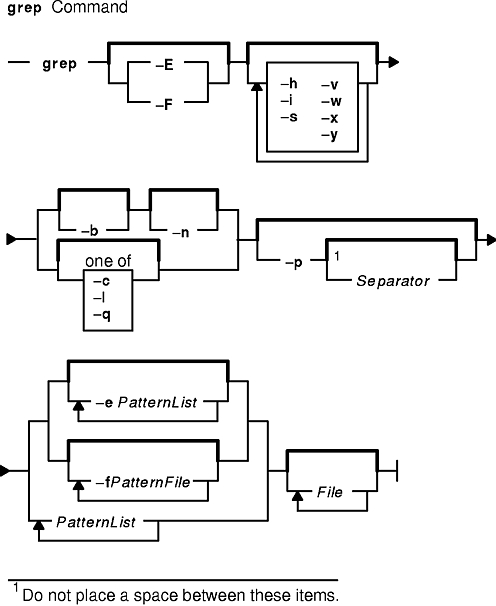

While straightforward pattern matching is sufficient for some filtering tasks, the true power of grep lies in its ability to use regular expressions for complex pattern matching. This filters the output of the ls command’s help text and looks for appearances of “dired”, and outputs them to standard out: -D, -dired generate output designed for Emacs' dired mode Regular Expression Overview For instance, given the following command: ls -help | grep "dired" Then, grep filters this output according to the match pattern specified and outputs only the matching lines. The output of any command or stream can be piped to the grep command. In addition to reading content from files, grep can read and filter text from standard input. This option can be used to protect a pattern beginning with “-”.

If this option is used multiple times, search for all patterns given. Invert the sense of matching, to select non-matching lines. Show 2 (or another number of) context lines in addition to the matched line. Print the line number of each matched line. Ignore case distinctions, so that characters that differ only in case match each other.
#Grep pattern file full
Output only the matching segment of each line, rather than the full contents of each matched line. Grep provides a number of powerful options to control its output: Flag Equivalent to the deprecated egrep command. If you need a more expressive regular expression syntax, grep is capable of accepting patterns in alternate formats with the following flags: Flag Patterns in grep are, by default, basic regular expressions. When run in recursive mode, grep outputs the full path to the file, followed by a colon, and the contents of the line that matches the pattern. When used on a specific file, grep only outputs the lines that contain the matching string. It enables recursive searching through a directory tree, including subdirectories: grep -r "string" ~/thread/ If you want to search files in a directory, include the -r flag. You can use grep to search a single file or to search multiple files at the same time. The above sequence will search for all occurrences of “string” in the ~/threads file. The second (optional) argument is the name of a file to be searched.

The first argument to grep is a search pattern. The Grep CommandĪ basic grep command uses the following syntax: grep "string" ~/threads.txt It is also provided as part of the common base selection of packages provided in nearly all distributions of Linux-based operating systems. This guide references recent versions of GNU grep, which are included by default in all images provided by Linode.
#Grep pattern file how to
This tutorial provides an overview of how to use grep, a brief introduction to regular expression syntax, and practical examples. It is so ubiquitous that among developers, the verb “to grep” has emerged as a synonym for “to search.” The grep command is a useful tool for searching all occurrences of a search term in a selection of files, filtering a log file or stream, or as part of a script or chain of commands. Grep, in files management, is a command-line utility that can search and filter text using a common regular expression syntax.


 0 kommentar(er)
0 kommentar(er)
